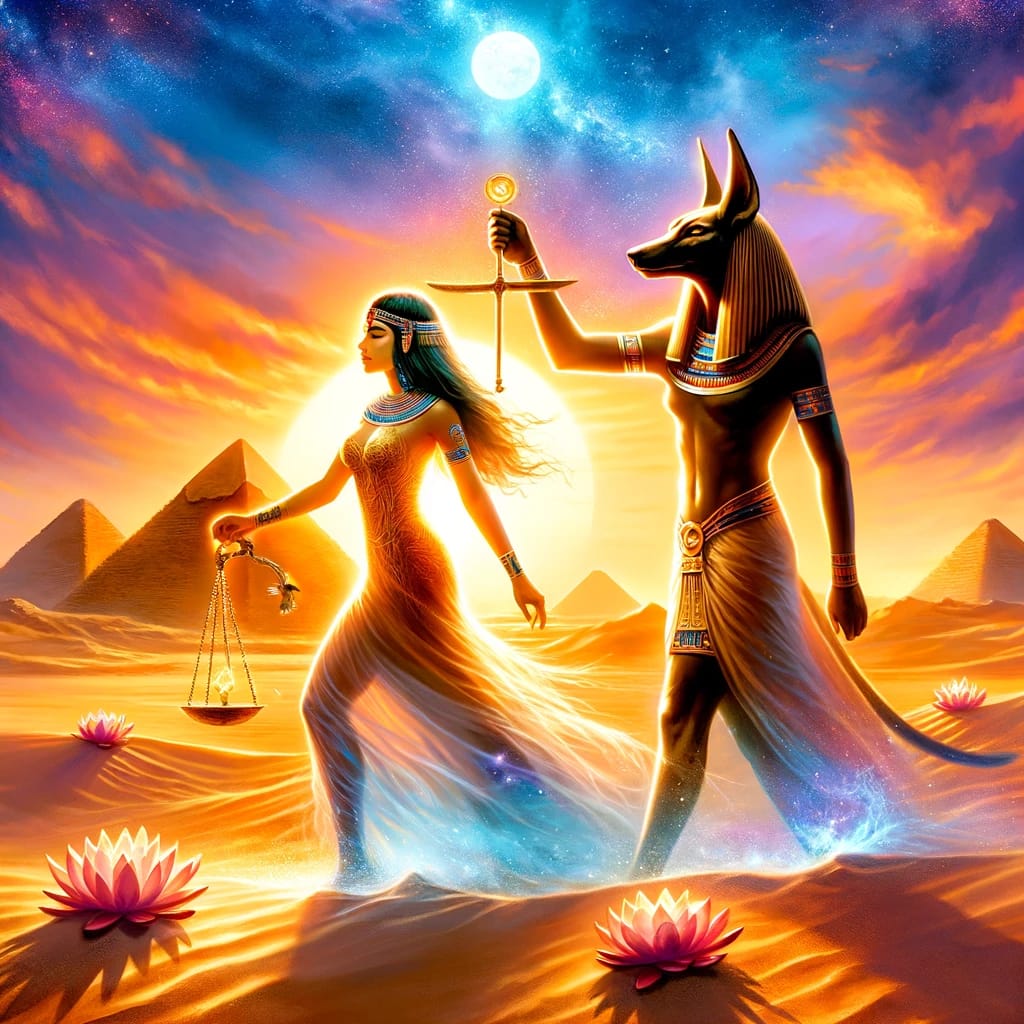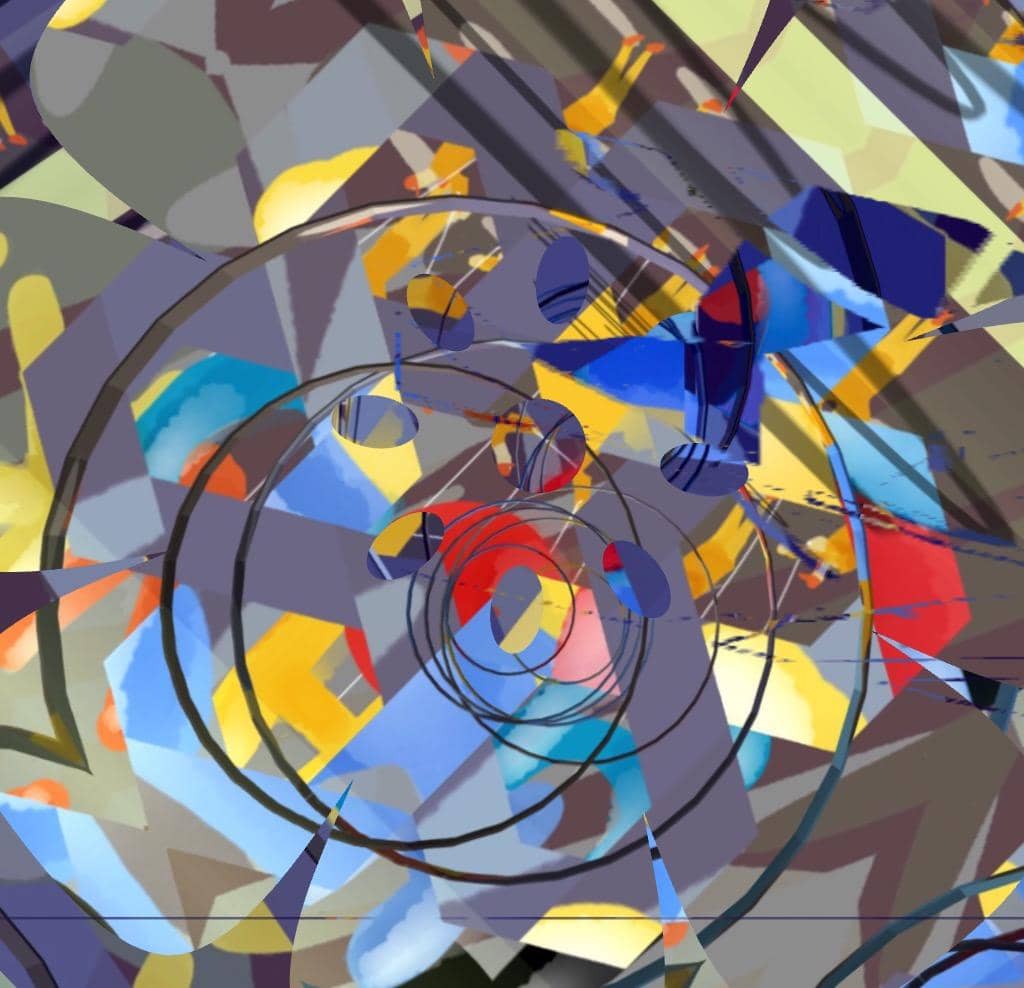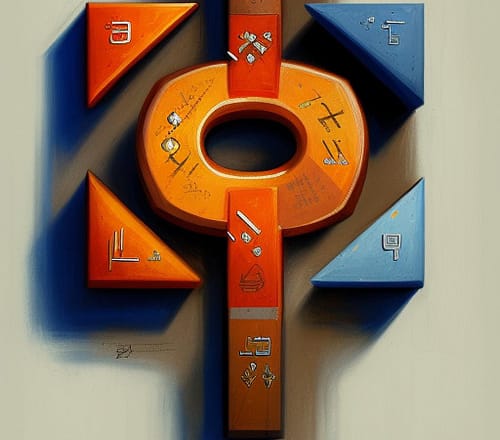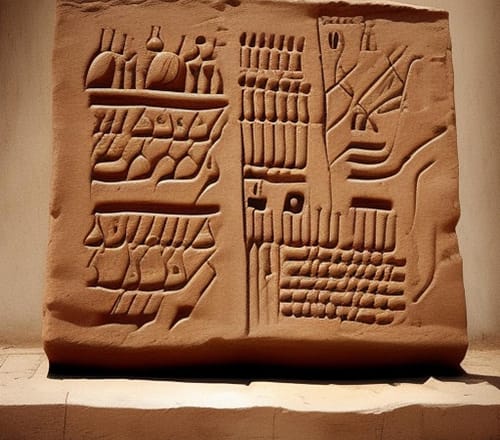
Table of Contents
From the Sands to the Stars
In the golden sands of ancient Egypt, beneath the shadow of towering pyramids and the watchful eyes of statuesque gods, there unfolds a tale of transition from the mortal realm to the enigmatic embrace of the afterlife. This is the story of Neferet, a scribe’s daughter, whose heart was as pure as the lotus flowers adorning the Nile.
As the sun dipped below the horizon, painting the sky with hues of fiery orange and deep indigo, Neferet’s soul embarked on its journey, guided by the god Anubis, the jackal-headed guardian of the dead. They traversed through the whispering sands, leaving behind the world of the living, and stood before the great scales in the Hall of Ma’at.
The air was thick with anticipation as Anubis placed Neferet’s heart on one side of the scale, and on the other, the feather of Ma’at, symbolizing truth and justice. The balance of the scales would determine Neferet’s fate in the afterlife. All of creation seemed to hold its breath as the scales tipped, then steadied – her heart was as light as the feather, untainted by wrongdoing.
Triumphant, Neferet was led by Horus, the falcon-headed god, into the Field of Reeds. This was Aaru, the heavenly paradise that mirrored the Egypt she had loved: a verdant land of eternal peace, where the Nile flowed and lotuses bloomed endlessly. Here, she was reunited with her ancestors, who welcomed her with open arms into a realm where the sun never set, and joy knew no bounds.
In this sacred space, Neferet discovered that death was not an end, but a transformation, a passage into a world beyond the imagination of the living. She became a star in the night sky, watching over those she had left behind, her legacy written in the constellations.
And so, through Neferet’s journey, the ancient Egyptians illustrated their belief in the cyclical nature of life, death, and rebirth. It was a tale that comforted the hearts of those who grieved, promising that for every ending, there was a new beginning in the afterlife, a place of eternal harmony where the soul, freed from earthly burdens, could truly flourish.
This story, passed down through generations, remains a testament to the enduring hope and profound wisdom of a civilization that saw in death not a conclusion, but a continuation of life’s grand, mystical journey.

The illustration captures the poignant moment of Neferet’s journey into the afterlife, guided by Anubis, with the backdrop of an Egyptian sunset and pyramids. This image embodies the essence of hope, serenity, and the mystical passage beyond.
Meaning of the Egyptian names in this story and the symbols used
Indeed, the tapestry of Egyptian mythology is rich with symbolism and the names chosen for this story carry deep meanings reflective of their roles and attributes. Here’s a brief exploration of the names and symbols within “The Journey of Neferet. From the Sands to the Stars“:
Neferet
The name “Neferet” is derived from the ancient Egyptian word “nefer,” which means beautiful or good. It was a common component of longer names and was often used to convey beauty, goodness, or perfection, reflecting Neferet’s pure and virtuous heart in the story. Her character embodies the ideal traits that ancient Egyptians aspired to, ensuring her passage through the afterlife was favorable.
Anubis
Anubis, the jackal-headed god, is one of the most iconic deities of ancient Egypt, associated with mummification and the afterlife. His role in guiding souls and weighing the heart against the feather of Ma’at places him as a guardian and judge, ensuring only the worthy pass into the afterlife. The jackal was often seen in cemeteries, leading the ancient Egyptians to associate it with death and the protection of graves.
Ma’at
Ma’at is both a goddess and a concept representing truth, justice, harmony, and balance. The feather of Ma’at, against which the heart is weighed, symbolizes the ideal of living a balanced and ethical life. It underscores the Egyptian belief in cosmic order and the necessity of living in accordance with the universal laws to secure a place in the afterlife.
Symbols
- The Scales: Symbolize the weighing of the heart against the feather of Ma’at, a crucial test to enter the afterlife. It represents the judgment of the deceased’s actions in life, emphasizing the importance of moral integrity and balance.
- The Lotus Flowers: Often associated with rebirth and the sun, the lotus flower emerges from the murky waters each morning to bloom anew. It signifies purity, resurrection, and the soul’s emergence into the afterlife.
- The Pyramids: Represent the eternal nature of the soul and the monumental journey from life through death to rebirth. The pyramids, as tombs, were designed to protect the pharaoh’s body and soul, aiding their transition to the afterlife.
- The Field of Reeds (Aaru): A paradise that reflects the desires and pleasures of life, offering eternal contentment. It symbolizes the reward for those who lead a life in accordance with Ma’at, embodying the ancient Egyptian aspiration for a blissful existence beyond death.
Through these names and symbols, “The Journey of Neferet. From the Sands to the Stars” intertwines the profound beliefs and values of ancient Egyptian culture with the universal quest for meaning and continuity beyond our mortal existence.
Short Transliteration (ancient Egyptian) and its translation
Crafting an exact transcription in ancient Egyptian and translating it into English involves navigating the complex system of hieroglyphs, the written script used by the ancient Egyptians. Here’s a simplified example inspired by the themes of our tale, using a phrase that might have been whispered in the winds of the Nile:
Ancient Egyptian (Transliteration)
“Ankh, udja, seneb.”
This phrase encapsulates a powerful wish and was often used in inscriptions for health and well-being. Its direct translation into English is:
Translation
“Life, prosperity, health.”
In the context of our story, imagine this phrase inscribed on a stela at the entrance of Neferet’s tomb, blessing her journey into the afterlife and ensuring her eternal contentment in the Field of Reeds. It reflects the Egyptians’ profound connection to the spiritual realm, invoking blessings that were believed to protect and aid the deceased in their journey beyond.
Thank you for reading, shares and comments 👍
Sources openai Language models, aitrot, picsart and mib
Embark on a journey into the realm of affiliate marketing and craft your own website within a vibrant, supportive community. Join me in this adventure, where you can begin as a free starter and stay as long as you desire. Enjoy complimentary hosting and foundational teachings to set you on your path. For those with advanced skills, opportunities to elevate your expertise await. Take a moment to explore and witness the magic for yourself!




